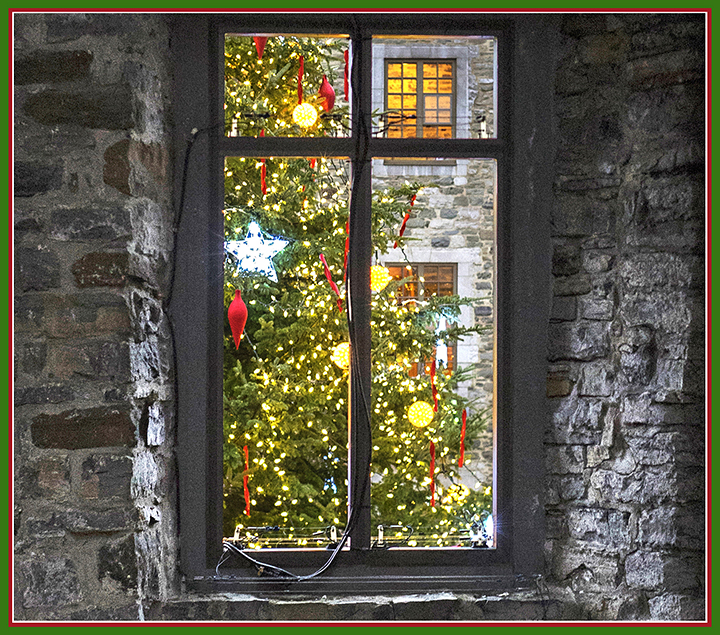
Enduring tradition spruces up ChristmasCOFFEE WITH WARREN, with Warren Harbeck |

|
A Christmas tree in the Vieux Port of Quebec City spruces up memory, tradition and the present. Following up on last week’s guest column by our son Reg on Christmas crèches, this week’s column is a gift from our son James Harbeck, writer, editor, linguist and photographer, on another symbol of the season. Thanks, James! —Dad WHEN I WAS A TEENAGER, we lived in a big house at the foot of Mount Yamnuska. Every December, we would go out into our big back lot and find a suitable spruce tree. We would cut it and drag it across the snow and into the house, and it would spruce up our living room as we spruced it up with ornaments, garlands and those little tinsel strips the cats always ate. The original point of a Christmas tree is that it’s evergreen, representing the endurance of life and of Jesus and faith. But while any evergreen will do, a spruce is especially apposite. The word “spruce,” you see, has its roots in the word “Prussia” (“spruce” as in “spruce up” also comes from “Prussia,” but by way of references to clothing). Prussia is also where we got the Christmas tree. The first Christmas tree as such is said to have stood in the town square in Riga, Latvia, in 1510, but the idea very quickly spread west into Prussia, which stretched across the northern part of what is now Poland and Germany. Germans loved their Christmas trees, and German settlers in North America brought the custom over – although more religiously conservative Anglo-Americans initially shunned the practice as paganism; they wanted to keep Christmas about Christ, not trees and presents and such things. But when Queen Victoria and her German husband, Prince Albert, put up a Christmas tree in Windsor Castle in 1848, the Illustrated London News published an engraving of it, and the trees became popular in the English-speaking world. Now it seems like they’ve been around since time immemorial. Another reason the spruce in particular is apposite is that the oldest tree in the world is a spruce. Well, sort of: the tree’s current trunk, a scraggly thing on a mountain in Dalarna, Sweden, is only about 600 years old, but it’s the latest growth of a root system that has been regenerating trees for nearly 10,000 years. So as an organism it really has been around since time immemorial, never truly dying. Now, that’s a symbol of endurance, regeneration and return. Of course, my family’s Christmas tree didn’t endure indefinitely. It started dropping needles right away. After Christmas was over, we dragged its moulting hulk down our gravel driveway and left it there until Easter, when we burned its remains in a big blazing bonfire. But the next Christmas, there would be another tree. Nothing and no one stays the same, but things keep coming around. When I was a kid, one year we lived on Dalarna Bay in Calgary; the next we moved to the village of Morley; two years later we moved to the house by Yamnuska; five years later we moved out of it, and a few years later that house itself burned away like a discarded tree. Still, every year, Christmas comes around. And nowadays, my wife and I really do have the same tree every year. For the last 15 years, we’ve pulled out the same apartment-size artificial tree, spruced it up lavishly, and after Christmas (and no later than the start of Lent!) taken it all down and stored it until the next year. We don’t usually open gifts by it on Christmas morning, though. We go visit her family and open gifts around their tree. It just so happens that they’re Latvian, like the first Christmas tree. They also love playing German Christmas albums (vinyl! 50 years old!). Things grow and change, things come and go, and yet they keep coming around. So do traditions. And somehow they seem timeless every time. And we spruce them up, and they spruce us up. © 2018 James Harbeck |